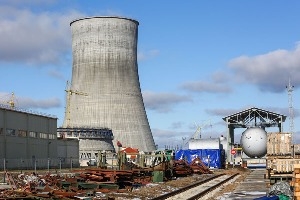Ru
|
Eng
Lithuania sees progress in negotiations on Belarusian nuclear power plant
15.09.2016

Lithuania sees progress in negotiations with Belarus on the Belarusian nuclear power plant project, BelTA learned from Vitalius Auglis, Director of the Pollution Prevention Department of the Lithuanian Ministry of Environment, after the second round of Belarusian-Lithuanian consultations about the Belarusian nuclear power plant in Minsk on 14 September.
The official said: “Some matters have yet to be discussed, but we see small progress. The Belarusian side has invited the IAEA’s SEED mission to evaluate the construction site. Apart from that, the Ostrovets site will be subjected to stress tests.”
In his words, progress in these negotiations is not sufficiently fast.
Vitalius Auglis remarked that Belarus and Lithuania are supposed to present a joint report to the Espoo Convention Implementation Committee by November. “There is no need to rush things in this regard. There are still questions we need answers for, this is why signing the paperwork is out of the question for now,” stated the Director of the Pollution Prevention Department of the Lithuanian Ministry of Environment.
Belarusian and Lithuanian experts met in Minsk on 13-14 September for bilateral consultations to discuss technical and scientific aspects of the Belarusian nuclear power plant construction project. The consultations continued the bilateral dialogue that began in June 2016. A number of matters were discussed, including the design of the nuclear power plant, nuclear safety, radiation protection oversight, including the development of the relevant laws in Belarus, and the organization of environmental monitoring measures.
The Belarusian side included representatives of the Natural Resources and Environmental Protection Ministry, the Energy Ministry, the Healthcare Ministry, the Emergencies Ministry, and a number of other central government agencies.
During the first round of consultations that took place in Vilnius on 21-22 June 2016 Belarus gave detailed answers to questions concerning reasons and criteria for choosing the Ostrovets site for building the Belarusian nuclear power plant, the assessment of seismic safety of the Ostrovets site and the alternative sites, and the application of procedures for evaluating environmental impact in a transboundary context.
BELNPP: NEWS FROM CONSTRUCTION SITE
23.07.2024
11.07.2024
28.06.2024
06.06.2024
04.06.2024
04.06.2024
03.06.2024
24.05.2024
23.05.2024
03.05.2024













